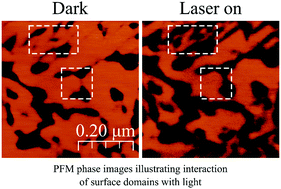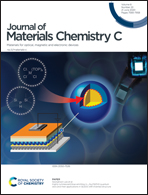Functional surface layers in relaxor ferroelectrics†
Abstract
Relaxor ferroelectrics are technologically important materials for applications in, for example, high-temperature capacitors, transducers and nano-positioning systems. These materials have often been reported to exhibit surface or skin layers with distinct physical properties to the bulk. The control of formation and functionality of these skin layers has remained elusive and is becoming increasingly critical due to device miniaturization, where the surface contribution to overall material properties becomes significant. We recently demonstrated that the distinct structural distortion of the skin layer is intimately related to the internal chemical pressure applied by oxygen vacancies and the plane stress conditions at the surface. (S. Kong, N. Kumar, S. Checchia, C. Cazorla and J. Daniels, Adv. Funct. Mater., 2019, 29, 1900344) Here, we demonstrate a unique capability to control the formation and properties of the skin layer through the control of defect concentration. Most interestingly, the skin layer is polar and both electrically and optically active, making it functional and a new candidate for low operating voltage and/or optoelectronic devices. The surface domains in the skin could be altered by applying a small voltage bias (1000 times lower than bulk) or light illumination. A reversible optical change in surface domains provides a new non-contact external control to tune the material polarisation.



 Please wait while we load your content...
Please wait while we load your content...